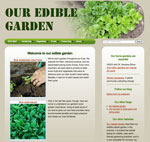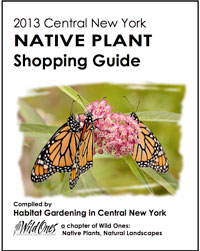eBird and the New Birding Technology
Wed., Nov. 13
7:00 pm
|  | After leaving college, Drew Weber spent summers doing surveys for the Second Atlas of Breeding Birds in Pennsylvania. Thus began his work in melding evolving digital technology with birding skills.
In this presentation, sponsored by Onondaga Audubon, Drew will share what he has learned about creating bird lists across digital platforms, including eBird and BirdsEye for iPhone, and what that data can tell you about birds-and your birding.
Fayetteville Free Library 300 Orchard St., Fayetteville (Directions)
|
Resources for teachers and homeschoolers
from the Cornell Lab of Ornithology | |
|
For middle school teachers Citizen Science: 15 Lessons that Bring Biology to Life The goal of this new book is simple: to inspire you to engage your students through citizen science, thereby connecting students with relevant, meaningful, and real science experiences. Citizen science can support independent inquiry as well as learning both content and process skills. It illustrates the power of citizen science through case studies of middle school classes and also provides 15 lessons so educators can build data collection and analysis into their science teaching. For homeschoolers Science Investigator's Kit for HomeschoolersThis is a curriculum created especially for homeschoolers who want to get outside to observe nature and build science skills. A ready-to-go resource, the lessons propel your child to consider the local environment through creative thinking, the scientific processes, and citizen science. More resources for schools on My Habitat Garden website:Science for kidsHabitat gardening at schoolNote: You can click on each section of the menu to "pin it down" as you navigate through the menu levels.
|
| Fall into Phenology |
 | |
Last phenophase for the sugar maple: 50% leaves fallen
|
|
Celebrate the beauty of autumn by observing plants in your community with Project BudBurst's Fall into Phenology campaign. During September and October take a moment and make an observation of plants as the seasons change. Participating is easy - just Observe, Record, and Submit. New to phenology? There's help on the Project BudBurst website.
|
HGCNY Officers
| |
| President:
Janet Allen
Vice-President:
Carol Biesemeyer
Treasurer:
Randi Starmer
Secretary:
Soule Leiter
Membership:
Linda Rossiter
Program Chair:
Carol Biesemeyer
Newsletter Editor:
Janet Allen
Additional Planning Committee Members:
Beth Mitchell
Dave Mitchell
John Allen
|
| Our Habitat Garden |  |
Visit Our Habitat Garden website for information on providing habitat, earth-friendly gardening practices, plants, and various creatures here in Central New York. TIP: Click on each sliding menu item as you navigate through the menus to pin them down instead of sliding away.
|
| HGCNY on Facebook |
As as more of us participate on our Facebook page, this will become a useful resource for asking (and answering!) local HGCNYers' questions about habitat gardening. |
|
Join HGCNY!
|  |
Becoming an official member of HGCNY is easy: just join Wild Ones! Basic household membership is $37/year, but there are other options, too. (See membership application or website.)
Wild Ones
P.O. Box 1274
Appleton, Wisconsin 54912-1274
Make checks payable to Wild Ones.
Or telephone toll-free 877-394-9453.
|
|
Our Edible Garden
|  | Visit OurEdibleGarden.org to see an example of a Central New York edible garden, the perfect companion to your habitat garden.
|
|
 | | Juniper |
Our October 27 program will help you enjoy winter more!
We're pleased to again have Joe McMullen, Environmental Consultant, as our speaker. He'll give us tips on how to identify plants in winter when they don't have their leaves or flowers.
You may remember Joe from previous presentations, as well as our very popular guide on our walks around Onondaga Lake's habitat restoration.
We meet at Liverpool Public Library on the last Sunday of the month at 2:00 pm. Free and open to the public. Invite a friend! ( Directions) Save the dates for upcoming programsNov. 24 ( NOT Thanksgiving weekend this year!): Jessi Lyons, Cooperative Extension natural resource educator, will discuss the Emerald Ash Borer, which has arrived in our area. (No meeting in December.) And a TIP about using the Our Habitat Garden website: Simply click on each menu item as you navigate through the multilevel menus. This pins them down so they don't slip away.
Janet Allen
President, HGCNY
|
|
|
Leave leaves alone
 | | A big mistake! |
It's that time of year again when so many people spend so much time and so much effort to create so much harm and miss an opportunity to do so much good. What are they doing? Raking up the fallen leaves, piling them into bags, and setting them out to the curb. So what's the harm?
Besides the fact that raking and bagging leaves isn't much fun, here are some other costs: 1) Huge costs to taxpayers: estimates range from $100k to $750k at a municipal level, depending upon the municipality. 2) Huge costs to the soil. Topsoil is created so slowly that it's not a quickly renewable resource. Decomposing leaves enrich the soil year after year. 3) Butterfly or moth pupae are often in those leaves. Why attract butterflies to your yard, then throw next year's generation out in the trash? 4) If leaves are simply raked out to the curb, decomposing leaves can harm the water quality in our lakes and streams. 4) And leaf-blowers seriously destroy a neighborhood's peace and tranquility, in addition to spewing out pollutants.  What to do instead? What to do instead? As the Westchester County's Love 'Em and Leave 'Em (LELE) initiative says, "Shredding your leaves where they are on the lawn, using shredded leaves as a winter mulch on landscape beds, collecting shredded leaves into compost piles, or simply leaving your leaves under the trees in wooded areas are all examples of using Mother Nature's own time-tested method of turning old leaves into new soil."Here's a short video from LELE that shows how to mulch leaves on the lawn and their FAQ page that answer homeowners' questions about LELE practices. And if you have more leaves than you want covering your perennials, just pile the extras into wire bins. These directions from Cooperative Extension show you how to make a welded wire cylinder bin, as the one shown above. With virtually no effort, the leaves you pile into the bin decompose by themselves, leaving your with free leaf humus to benefit your yard. And Westchester County is making their toolkit freely available to other municipalities. And here's more info from Our Habitat Garden. |
|
Pesticides in purchased plants
 | | Swamp milkweed |
Studies have found that plants being sold in "big box" stores often contain systemic pesticides, i.e. pesticides that are not merely on the surface of the leaves, but which are in the plants themselves.
This obviously isn't good for creatures that eat the leaves (such as monarch caterpillars) or that collect the pollen and nectar (such as bees).
Read more about this issue from Beyond Pesticides.
Beyond Pesticides also has a free BEE Protective Habitat Guide you can download (a .pdf file).
|
|
How burning bush travels
 | | Burning bush berries |
Many people are puzzled when burning bush (Euonymous alatus) is listed as an invasive plant. After all, they don't see them popping up all over their yard.
Here's how they can spread to natural areas. Although they aren't conspicuous, burning bushes have berries that birds can eat, then "plant" with their droppings far from the bush.
Some colorful native alternatives to burning bush are
* highbush blueberry (Vaccinium corymbosum), as brilliantly red as burning bush, but with the added benefit of blueberries,
* red-osier dogwood (Cornus sericea) whose red twigs stand out against the snow all winter,
* red chokeberry (Photinia pyrifolia),
* winterberry (Ilex verticillata) whose brilliant red berries contrast beautifully against the snow and provide berries sought after by birds, and
* spicebush (Lindera benzoin) with clear, brilliant yellow leaves, which host spicebush swallowtail butterflies in the summer, and with nutritious red berries for birds.
More information about burning bush and other invasive shrubs is on the Our Habitat Garden website.
|
|
"Its own dead leaves ..."
 | |
Fallen spicebush leaves resting under the spicebush
|
Recall, before laying down a mulch of pine bark, that each bush or tree is accustomed to a cover of its own dead leaves below it, and so are the decayers that refeed it.
Keep a compost pile for kitchen wastes and cornstalks, but remember that fallen leaves, dead stems, and pulled weeds left in place supply a steadier source of humus than a once-in-a-springtime dole of rotted compost.
~ Sara Stein,
From Noah's Garden: Restoring the Ecology of Our Own Back Yards, p. 135
|
|
|
Native Plant Shopping Guide
 | | Click image to download the Guide |
Are you looking for native plants in general or a particular native plant?
Chances are you can find them somewhere in CNY.
Our 2013 Native Plant Shopping Guide shows you where. You're welcome to download it by clicking on the image to the right, OR you can download it from our website homepage (midway down the page). It's free!
As always, we recommend that you call ahead if you're looking for a particular plant. Some less common native plants may be in short supply, and you wouldn't want to waste a trip to find that your plant had sold out. |
|
|